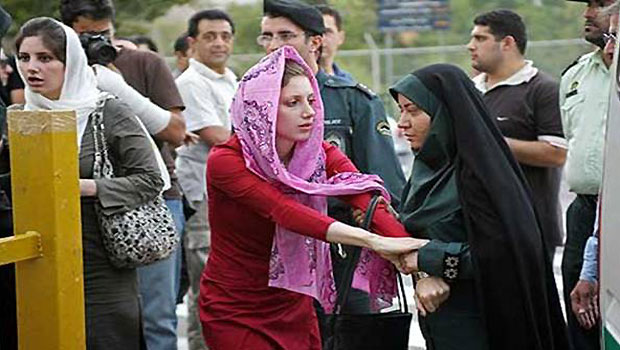
File photo of Iranian woman in colorful dress. (Fars)
London, Asharq Al-Awsat—Iranian president Hassan Rouhani raised the issue of the conduct of specialist police units enforcing Islamic dress codes on the public at a cabinet meeting on Tuesday, tasking his government’s cultural committee to further investigate the issue amid a growing controversy over a recent crackdown.
According to reports confirmed by the official presidential website, Rouhani has asked Iran’s police forces to refrain from implementing extreme methods in dealing with alleged violations of laws regarding correct Islamic attire.
However, Rouhani also reportedly reiterated that Islamic values and norms should be respected by all citizens, and requested Iran’s youth to abide by religious norms regarding clothing.
During his election campaign Rouhani pledged that all women would feel safe and secure walking in the street should he come to power, adding that no one should be afraid of being mistreated based on her appearance. He said, “I will not let anyone with no clear duty stop and question women in the street as I believe women and young girls will preserve hijab and morality.”
In recent weeks there have been various reports of harsh treatment of women being stopped and detained on the streets of Tehran by officers from a specialized branch of the police forces charged with enforcing state-sanctioned religious norms.
Some of the incidents were photographed, and many Iranian websites published the photos of women being stopped and detained by the police due to the color and shape of their attire.
All Iranian women are expected to cover their bodies and hair, but not their faces. This practice was introduced by 1981, and for nearly two decades there was no legislation to prescribe it. In 1994, as part of a new provisional Islamic penal code, a few articles were ratified to give observing the hijab and moral code of conduct regarding clothing legal basis.
Rouhani’s caution in tackling the issue may reflect the uncertain control of his government over Iran’s police forces.
According to the Iranian constitution, the supreme leader appoints the commanders of the military and law-enforcement bodies. However, the leader usually invests the interior minister with the authority to supervise the country’s police forces.
Without this authority from the supreme leader, the government has practically no control over police management and policy.
Rifts over control of Iran’s police forces became apparent during the first government of reformist President Mohammad Khatami, when Iran’s supreme leader Ali Khamenei did not transfer oversight power to then reformist interior minister Abdullah Nuri. After Nuri was impeached and replaced in 1999, Khamenei transferred power to his successor.
The current head of Iranian law enforcement organizations, General Ahmadi Moghaddam, is a close relative to the former president Mahmoud Ahmadinejad. He has reportedly been trying to maintain good relations with both radical and conservative factions of Iran’s “principalists” faction, which is distinguished by its loyalty to Iran’s supreme leader and its clerical system of government.
It is expected that once supervision of police forces is transferred to the current interior minister, the Rouhani administration will move to replace him.

Trackbacks/Pingbacks